This article was co-authored by Tu Anh Vu, DMD. Dr. Tu Anh Vu is a board certified dentist who runs her private practice, Tu's Dental, in Brooklyn, New York. Dr. Vu helps adults and kids of all ages get over their anxiety with dental phobia. Dr. Vu has conducted research related to finding the cure for Kaposi Sarcoma cancer and has presented her research at the Hinman Meeting in Memphis. She received her undergraduate degree from Bryn Mawr College and a DMD from the University of Pennsylvania School of Dental Medicine.
This article has been viewed 38,772 times.
Over time, your gums can become infected due to a buildup of tartar and plaque in your mouth. Keeping your gums clean and healthy can help to prevent gum disease. To clean your gums, you should follow good oral hygiene. You can also try using natural remedies. Consult a dentist before you try any natural remedies to ensure they are right for you. If you have gum related issues, speak to your dentist about professional cleaning options for your gums.
Things You Should Know
- The best way to keep your gums clean is with good overall oral hygiene, so always be sure to brush your teeth twice a day and floss once a day.
- You can also kill germs and prevent plaque by rinsing your mouth occasionally with an antiseptic mouthwash—but don't use it too often, or it could stain your teeth.
- To remove plaque and tartar from your gums, try oil pulling, which involves swishing oil in your mouth for 5-10 minutes.
- To have your gums professionally cleaned, ask your dentist about scaling and polishing, a procedure where the dental hygienist will scrape away plaque and tartar from your teeth and gums with a planing tool.
Steps
Following Good Oral Hygiene
-
1Use antiseptic mouthwash. You can get antiseptic mouthwash over the counter at the pharmacy. This type of mouthwash contains chlorhexidine, which can help to prevent a buildup of plaque on your teeth and gums. Only use the mouthwash as directed by your doctor or a pharmacist. Using mouthwash with chlorhexidine can stain your teeth brown so only use it occasionally.[1]
- Make sure you rinse your mouth well with water between brushing your teeth and using the mouthwash. This will ensure the mouthwash works properly and does not interact with any ingredients in your toothpaste.
-
2Brush your teeth properly. Another way you can keep your gums clean is by brushing and flossing your teeth correctly and regularly. Brush your teeth twice a day and/or after every meal. Use a soft bristle brush or an electric toothbrush, and brush for a full 2 minutes each time. In addition, opt for toothpaste that contains fluoride to maintain your teeth and gums.[2]
- Be sure to brush the front, back, and chewing surface of each tooth, and remember to brush the teeth all the way in the back of your mouth.
Advertisement -
3Floss regularly. You should also floss once a day to keep plaque and tartar from building up in your teeth and gums. Use about 18 inches of dental floss, holding it tight between your thumbs and forefingers. Slide the floss up and down between your teeth. Make sure you curve around the tooth when the floss reaches your gum line. Rub the side of your tooth with the floss to remove any food or plaque at the gum line. Floss all of your teeth, including your back teeth.[3]
- When you're flossing, press the floss down so it massages into your gums. Don't worry if your gums bleed at first—that just means there's some inflammation, and you should probably be more consistent with your flossing.[4]
- Try to floss after each meal so food does not get stuck in your teeth for a long period of time.
-
4Avoid eating sticky, sugary foods. Foods that contain sugar can end up getting onto your teeth and gums. They can then be difficult to remove, even with brushing and flossing. Avoid soft candies, toffees, taffies, and pastries. If you do eat sweets, rinse your mouth with water afterward or brush your teeth. Do not let these foods sit on your teeth or gums for a long period of time.[5]
- Make sure you have a lot of foods high in calcium in your diet, such as milk, yogurt, and cheese. Calcium is good for your teeth and your overall dental health.
- Try chewing sugar-free gum after you eat or drink to help remove anything that could stain your teeth. In addition, chewing gum stimulates your mouth to produce saliva, which can help prevent cavities.[6]
Using Natural Remedies
-
1Do oil pulling. Oil pulling can be done with sesame oil, olive oil, or coconut oil as long as the oil is 100% organic. This natural remedy can help to remove plaque and tartar on your gums by pulling them out. To do oil pulling, swish a tablespoon of oil in your mouth for five to ten minutes.[7]
- After five to ten minutes, spit the oil out in the garbage. Do not spit it out in the sink as the oil can clog your pipes.
- Rinse your mouth with warm water to remove any remaining oil in your mouth.
-
2Apply a garlic and turmeric paste. Garlic and turmeric have antibacterial properties and anti-inflammatory properties. They are great for maintaining your gum health. Press one to two cloves of garlic and add a teaspoon of turmeric. Mix the two ingredients together until they form a paste. Then, apply the paste to your gums and let it sit for one to two minutes. Rinse the paste off with warm water.[8]
- Be careful not to get turmeric on your mouth or face as it can stain your skin yellow. Only apply it to your gums.
-
3Use neem toothpaste or mouthwash. Neem is a plant that can great for dental health. Look for all natural neem toothpaste or mouthwash at your local health food store or online. Apply the toothpaste or mouthwash to your gums to clean them. Use a clean toothbrush or finger to do this.[9]
-
4Try sage tea. Sage contains antioxidants and has antimicrobial properties. It’s a great herb for gum health. Make sage tea by boiling 50 fresh organic sage leaves in distilled water. Gargle the tea at room temperature several times a day or use it as a mouthwash.[10]
- Another option is to drink the sage tea throughout the day.
Speaking to Your Dentist
-
1Ask your dentist about scaling and polishing. Get a deep clean of your teeth and gums by getting scaling and polishing done through your dentist. Scaling and polishing is usually recommended if you have a buildup of plaque and tartar on your teeth and gums or if you are at risk of developing gum disease.[11]
- During the cleaning, the dental hygienist will scrape away the plaque and tartar using special instruments, followed by a polish to remove marks or stains.
- See your dentist every 6 months for regular cleanings and exams.[12]
-
2Speak to your dentist about root planing. Root planing is a deep cleaning that gets under your gums to remove bacteria from the roots of your teeth. It is often recommended if you have gum disease or other gum related issues.[13]
- You will be put under local anaesthetic to numb your mouth during the cleaning. After the cleaning, you may feel pain and discomfort for 48 hours.
-
3Discuss surgical options with a periodontist if you have serious gum issues. Your dentist may recommend that you speak to a periodontist about periodontal surgery if you have severe gum disease and loose or infected teeth. Talk to a periodontist about this option if you have a tooth that is infected or your gums are swollen, irritated, or receding.[14]
- During periodontal surgery, any affected teeth will be removed. The periodontist may put you on antibiotics after the surgery to prevent further infection.
Expert Q&A
-
QuestionWhat are bleeding gums a sign of?
 Joseph Whitehouse, MA, DDSDr. Joseph Whitehouse is a board certified Dentist and the Former President of the World Congress on Minimally Invasive Dentistry (WCMID). Based in Castro Valley, California, Dr. Whitehouse has over 46 years of dental experience and counseling experience. He has held fellowships with the International Congress of Oral Implantology and with the WCMID. Published over 20 times in medical journals, Dr. Whitehouse's research is focused on mitigating fear and apprehension patients associate with dental care. Dr. Whitehouse earned a DDS from the University of Iowa in 1970. He also earned an MA in Counseling Psychology from California State University Hayward in 1988.
Joseph Whitehouse, MA, DDSDr. Joseph Whitehouse is a board certified Dentist and the Former President of the World Congress on Minimally Invasive Dentistry (WCMID). Based in Castro Valley, California, Dr. Whitehouse has over 46 years of dental experience and counseling experience. He has held fellowships with the International Congress of Oral Implantology and with the WCMID. Published over 20 times in medical journals, Dr. Whitehouse's research is focused on mitigating fear and apprehension patients associate with dental care. Dr. Whitehouse earned a DDS from the University of Iowa in 1970. He also earned an MA in Counseling Psychology from California State University Hayward in 1988.
Board Certified Dentist Bleeding gums are often a sign of gum disease. However, if you don't have gum disease and your gums bleed when you brush, it's a sign that you need to spend a little more time brushing and flossing that part of your mouth.
Bleeding gums are often a sign of gum disease. However, if you don't have gum disease and your gums bleed when you brush, it's a sign that you need to spend a little more time brushing and flossing that part of your mouth. -
QuestionI am young and have noticed gum recession, but I have seen several dentists and they say it is not a problem. How can this be? Isn't it terrible, even if it turns out not to be disease-related?
 Cristian Macau, DDSDr. Macau is an oral surgeon, periodontist, and aesthetician at Favero Dental Clinic in London. He received his DDS from Carol Davila University of Medicine in 2015.
Cristian Macau, DDSDr. Macau is an oral surgeon, periodontist, and aesthetician at Favero Dental Clinic in London. He received his DDS from Carol Davila University of Medicine in 2015.
Doctor of Dental Surgery Gum recession has a variety of causes and the most dangerous is due to bacterial infection which leads to periodontitis, loose teeth and eventually extraction if it’s not treated early. Most patients have slight gum recessions made by the incorrect brushing method and if the aesthetic look is very important the defect can easily be treated with a gum graft.
Gum recession has a variety of causes and the most dangerous is due to bacterial infection which leads to periodontitis, loose teeth and eventually extraction if it’s not treated early. Most patients have slight gum recessions made by the incorrect brushing method and if the aesthetic look is very important the defect can easily be treated with a gum graft. -
QuestionWhat are your top tips for having healthy gums?
 Tu Anh Vu, DMDDr. Tu Anh Vu is a board certified dentist who runs her private practice, Tu's Dental, in Brooklyn, New York. Dr. Vu helps adults and kids of all ages get over their anxiety with dental phobia. Dr. Vu has conducted research related to finding the cure for Kaposi Sarcoma cancer and has presented her research at the Hinman Meeting in Memphis. She received her undergraduate degree from Bryn Mawr College and a DMD from the University of Pennsylvania School of Dental Medicine.
Tu Anh Vu, DMDDr. Tu Anh Vu is a board certified dentist who runs her private practice, Tu's Dental, in Brooklyn, New York. Dr. Vu helps adults and kids of all ages get over their anxiety with dental phobia. Dr. Vu has conducted research related to finding the cure for Kaposi Sarcoma cancer and has presented her research at the Hinman Meeting in Memphis. She received her undergraduate degree from Bryn Mawr College and a DMD from the University of Pennsylvania School of Dental Medicine.
Board Certified Dentist Use a soft toothbrush and brush gently. If you scrub your teeth too hard, you could scratch the enamel, and it will lead to a recession of your gums.
Use a soft toothbrush and brush gently. If you scrub your teeth too hard, you could scratch the enamel, and it will lead to a recession of your gums.
References
- ↑ http://www.nhs.uk/Conditions/Gum-disease/Pages/Treatment.aspx
- ↑ Tu Anh Vu, DMD. Dentist. Personal interview. 7 May 2020.
- ↑ https://www.urmc.rochester.edu/encyclopedia/content.aspx?ContentTypeID=1&ContentID=1409
- ↑ Tu Anh Vu, DMD. Dentist. Personal interview. 7 May 2020.
- ↑ http://www.nhs.uk/Conditions/Gum-disease/Pages/Treatment.aspx
- ↑ Tu Anh Vu, DMD. Dentist. Personal interview. 7 May 2020.
- ↑ http://naturalsociety.com/7-home-remedies-for-gum-disease/
- ↑ http://naturalsociety.com/7-home-remedies-for-gum-disease/
- ↑ http://naturalsociety.com/7-home-remedies-for-gum-disease/
- ↑ http://naturalsociety.com/7-home-remedies-for-gum-disease/
- ↑ http://www.colgate.com/en/us/oc/oral-health/basics/dental-visits/article/deep-cleaning-your-teeth-when-to-do-it-0314
- ↑ Tu Anh Vu, DMD. Dentist. Personal interview. 7 May 2020.
- ↑ http://www.nhs.uk/Conditions/Gum-disease/Pages/Treatment.aspx
- ↑ http://www.nhs.uk/Conditions/Gum-disease/Pages/Treatment.aspx
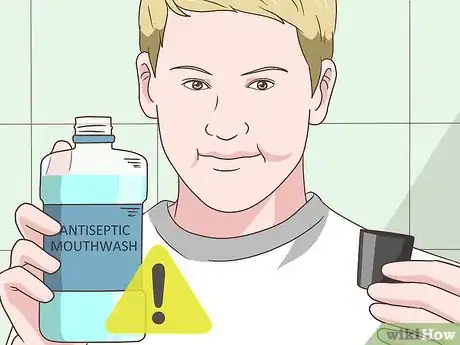

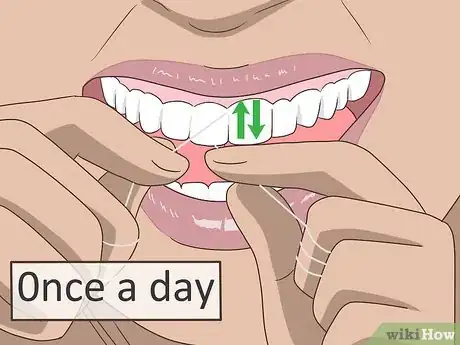
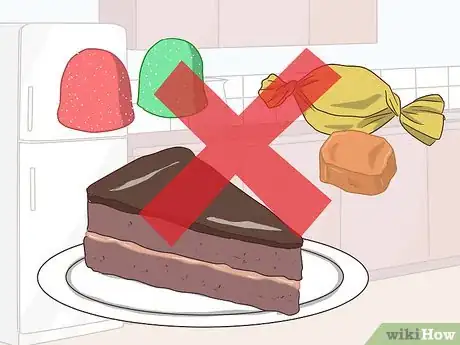
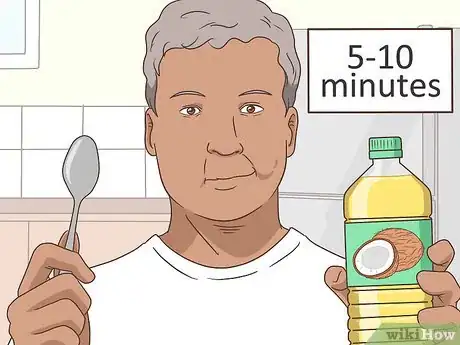
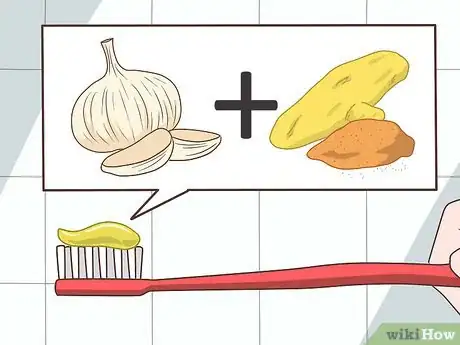
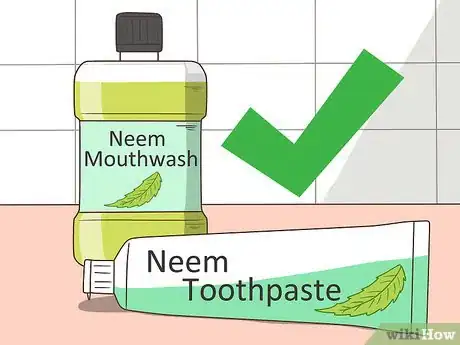

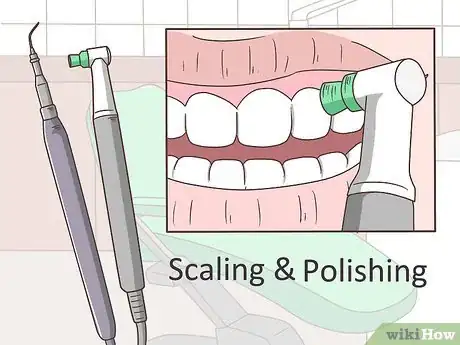
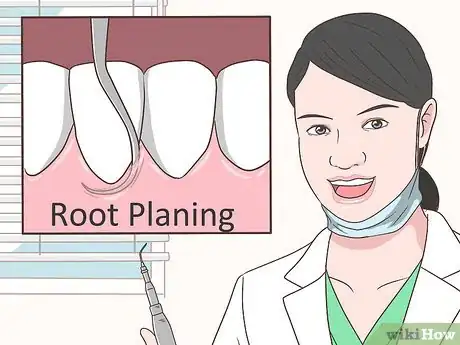
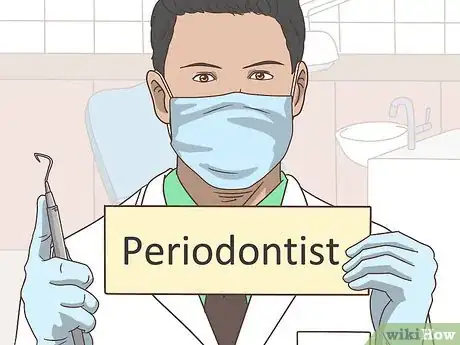





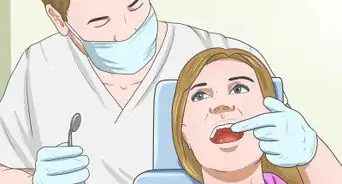
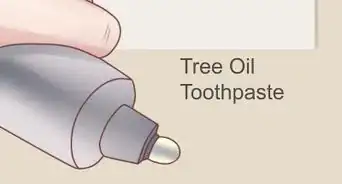



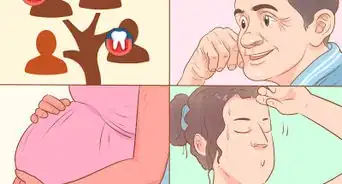
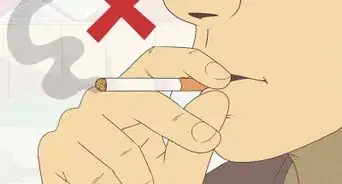


















































Medical Disclaimer
The content of this article is not intended to be a substitute for professional medical advice, examination, diagnosis, or treatment. You should always contact your doctor or other qualified healthcare professional before starting, changing, or stopping any kind of health treatment.
Read More...